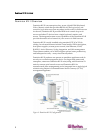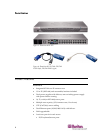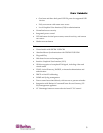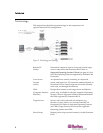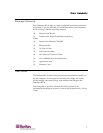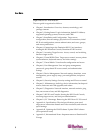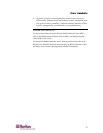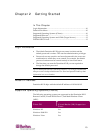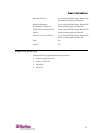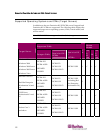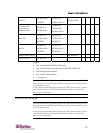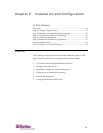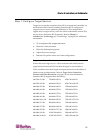
User Guide
8
Organization of Information
The user guide is organized as follows:
• Chapter 1, Introduction. Overview, features, terminology, and
package contents
• Chapter 2, Getting Started. Login information; default IP Address;
supported operating systems, browsers, and CIMs
• Chapter 3, Installation and Configuration. Target server
configuration; firewall settings; physical device connections; initial
KX II unit configuration; remote authentication; and users, groups,
and access permissions
• Chapter 4, Connecting to the Dominion KX II. User interfaces;
starting the KX II Remote Console; Dominion KX II Favorites
• Chapter 5, Accessing Target Servers. Access, control, and switching
between target servers
• Chapter 6, Virtual KVM Client. Target server control, mouse pointer
synchronization, keyboard macros, and video settings
• Chapter 7, Virtual Media. Virtual media configuration and access
• Chapter 8, User Management. User and group management,
passwords, group-based IP access control, and authentication
settings
• Chapter 9, Device Management. Network settings, date/time, event
management, power supply setup, port configuration, and power
control
• Chapter 10, Security Settings. Security settings and IP access control
• Chapter 11, Maintenance. Audit log; device information; backup and
restore; firmware and CIM upgrades; and reboot
• Chapter 12, Diagnostics. Network interface, network statistics, ping
host, trace route to host, and KX diagnostics
• Chapter 13, KX II Local Console. Starting the KX II Local Console,
accessing target servers, and local port administration
• Chapter 14, CC Unmanage. Removing the KX II from CC-SG control
• Appendix A, Specifications. Physical specifications; ports used;
target server connection distance and video resolution; and network
speed settings
• Appendix B, Updating the LDAP Schema. Update LDAP schema
(for experienced users)
• Appendix C, Informational Notes. Important notes on Dominion KX
II usage





